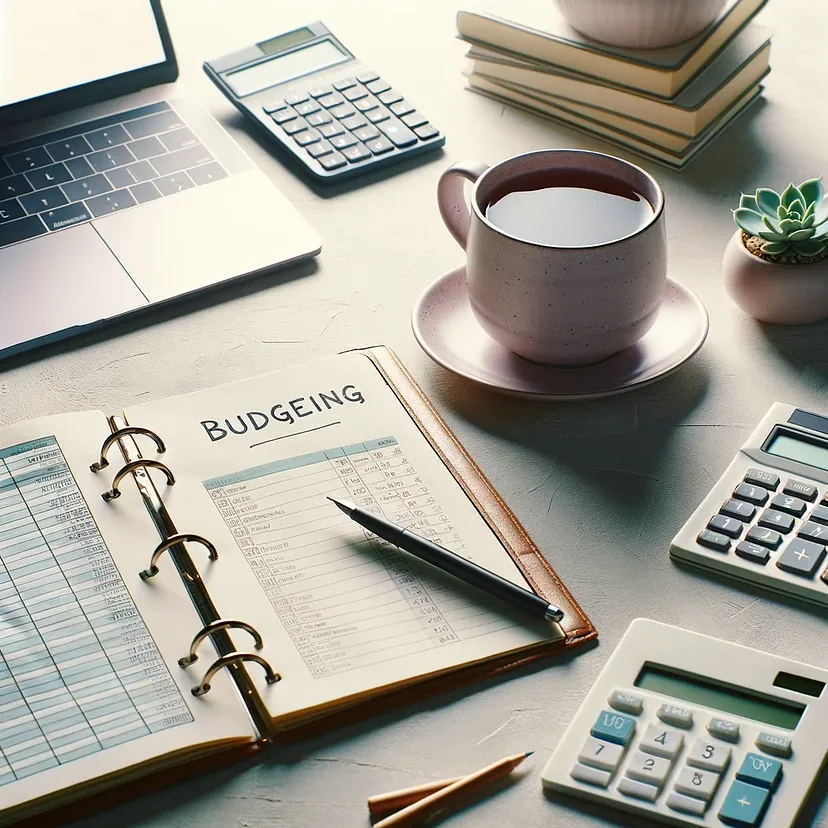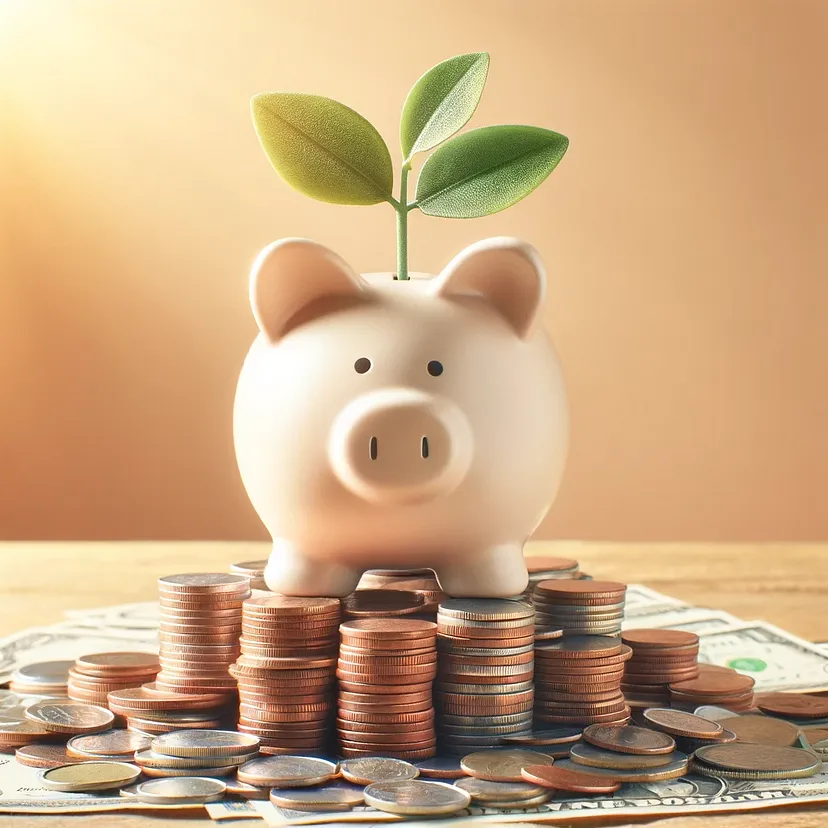Debt Management and Financial Freedom
10 Different Types Of Debt: Good Debt Vs Bad Debt Types
Debt generally is a tricky thing to navigate. As a lot of us have experienced firsthand, it’s much easier to get into debt than out of it! Nevertheless, the thought of “debt” shouldn’t be a monolith—there’s nuance to it because there are various kinds of debt.
Some of these debt can affect your funds in other ways. (For one, not every kind of debt are bad!)
Knowing the differing kinds of debt and learn how to manage them can provide help to make higher decisions about your funds.
In this text, we’ll discuss the differing kinds of debt and highlight those you ought to be careful to avoid. We’ll also include examples that be just right for you vs against you.
Kinds of debt: An outline
Before we jump into specific examples of debt, let’s go over two big aspects that may divide debt types into different categories.
Secured vs unsecured debt
On a high level, there are two principal varieties of debt: secured and unsecured.
Secured debt
Secured debt is a kind of loan that’s secured by collateral, corresponding to a house or automotive loan. If the one that borrowed the cash shouldn’t be in a position to make payments on the loan, then the lender can take possession of the collateral.
Unsecured debt
Unsecured debt is a kind of loan that’s not backed by collateral. Because the lender has no method to guarantee repayment, they typically charge more interest or have stricter loan requirements.
Unsecured debt can include bank cards, personal loans, student loans, medical bills, and more.
Revolving vs installment debt
One other distinction can be between revolving and installment debt. These can each also fall under the umbrella of secured or unsecured.
Revolving debt
Revolving debt permits you to borrow, repay, and re-borrow money as much as a certain limit. Bank cards are a quite common type of revolving debt.
The rate of interest on revolving debt will vary depending on the kind of loan and your creditworthiness.
Installment debt
Installment debt is a kind of loan where borrowers make fixed payments over a time frame. A lot of the examples on this list shall be installment loans; they’re more common than revolving ones.
The principal differences here lie in how repayment is structured. With revolving debt, you utilize and repay it as needed.
With installment debt, you make fixed payments over a specified time frame. Moreover, revolving debt typically has the next rate of interest than installment debt.
Now that we’ve covered the fundamentals, let’s break down the various secured and unsecured subtypes in each category!
5 Secured debt types
For debt to be considered “secured,” it’s essential to put up some type of collateral. In lots of cases, the item you’re financing will function its own collateral. As an illustration, if you happen to stop paying your auto loan, the car could be repossessed.
It is usually easier to be approved for a secured loan for the reason that lender can recoup a few of their losses if the borrower defaults. Listed below are five examples of debt that count as secured!
1. Mortgages
This can be a kind of secured installment debt that’s used to finance the buying of a property, like a private home. The property itself is the collateral for the loan.
Should you stop making payments, the lender could ultimately foreclose on the home. A mortgage loan is often paid every month over a period of 15 to 30 years.
Once you’re buying a house, you’ll put a certain quantity down initially (the “down payment”). Then, you may apply for a mortgage to cover the remaining.
Rate of interest and principal
The rate of interest in your mortgage shall be based in your credit history, the quantity of the loan, and the length of the loan term.
Like with most loans, your monthly payments shall be a mixture of principal and interest. As you repay the principal, you’ll owe less interest with each payment, meaning that more of your money shall be applied to the principal as time goes on.
In turn, you’ll own an even bigger and greater percentage of the home, called your own home equity.
Good debt or bad debt? Mortgage debt is generally considered probably the greatest sorts of debt. Nevertheless, it does still rely upon the situation.
On one hand, taking out a mortgage permits you to purchase a house, providing stability and a spot to construct your foundation for a sound financial future (together with equity). Then again, you would like to watch out that you simply’re not biting off greater than you may chew.
A big mortgage loan plus other home expenses could find yourself making you “house poor”!
2. Auto loans
Should you’re seeking to buy a vehicle like a automotive or truck, you could have two options. The primary is to avoid wasting up for the vehicle and pay the complete amount in money.
The second is to take out an auto loan. These are installment loans where you’ll have a hard and fast payment over a specified time frame. The vehicle serves as collateral for its own loan, so it will possibly be repossessed within the event of nonpayment.
What it’s essential get an auto loan
To be able to get an auto loan, you’ll typically need to supply proof of income, a credit rating, and a down payment on the vehicle. The terms of your loan will vary depending on the lender and your credit/funds.
Good debt or bad debt? This one can go either way. As a substitute of taking up a hefty amount of debt for the most recent and most costly cars, it’s often best to deal with more modest, inexpensive options.
Otherwise, you would possibly end up struggling to make payments and wondering learn how to get out of a automotive loan!
3. Equipment loans
Should you’re a small business owner or an entrepreneur, you would possibly end up considering various kinds of debt to finance tools and machinery needed to run a business. That’s what equipment loans are for!
Similar to the opposite two secured types above, the equipment you’re buying serves as its own collateral.
What you would possibly use an equipment loan for
Equipment loans are typically used to buy items corresponding to computers, software, machinery, and other things which may be obligatory for a business to operate.
You can even use some of these debt to finance stuff you need for growth and expansion. Equipment loans are paid back in regular installments.
Good debt or bad debt? Overall, equipment loans might be useful for businesses and entrepreneurs. Nevertheless, be sure that you’ve crunched the numbers and factored them into your corporation plan.
This equipment should provide help to achieve your small business goals and earn more money! But taking up an excessive amount of debt too fast could put your corporation in danger.
4. Home equity loans
The sort of loan, also called a “second mortgage”, lets homeowners borrow money by utilizing their home’s equity as collateral.
Remember, equity is the portion of the house’s value that belongs to the owner. Equity value may increase because the property value appreciates.
Learn how to use the cash from a house equity loan
People use home equity loans for a wide range of reasons. You may want it for improvements, debt consolidation, education expenses, or major life events corresponding to a marriage or medical bills.
Homeowners might also use a house equity loan to finance the buying of a second home or investment property.
A house owner can apply for a house equity loan through a bank or lender. They are going to determine the quantity of equity available in the house and the homeowner’s ability to repay the loan.
If approved, the homeowner will receive a lump sum of cash and shall be required to make monthly payments on the loan, which generally have fixed rates of interest and repayment terms.
Good debt or bad debt? This will depend on how you utilize it. Should you want the cash to make improvements that increase the worth of the property, that may very well be useful debt.
The identical goes for leveraging your own home’s value to purchase one other property that can make you money.
Or, if you happen to’re using the loan money to repay higher-interest debt like bank cards, it may very well be a sensible financial decision to consolidate that debt at a lower rate of interest.
Nevertheless, the flip side is that home equity loans are examples of debt with very high stakes. Should you can’t make the payments, you would possibly lose your own home. So, proceed with caution!
5. Secured line of credit
Should you don’t have an important credit rating, you would possibly struggle to get traditional unsecured lines of credit (e.g. most bank cards). That’s where secured lines of credit are available.
You’ll put up collateral to secure the loan, like money in your savings account, a vehicle, or other assets.
The way it affects credit scores
A line of credit is revolving debt. Meaning you may access funds as needed, repay the debt, then use it again in the long run. An enormous perk is that making payments on time will help improve your credit rating!
Good debt or bad debt? The principal advantage of a secured line of credit is to help you build your credit.
In fact, as with every secured loan, you risk losing your collateral (and tanking your credit further) if you happen to’re unable to make payments.
5 Unsecured debt types
Now, let’s turn to the assorted unsecured varieties of debt. Since unsecured types don’t involve collateral, you won’t must worry about things like losing your home if things go south.
Nevertheless, this kind of debt is often dearer than secured debt because it’s riskier for the lender. Let’s try five different unsecured kinds of debt.
1. Bank cards
Likelihood is, that is one kind of debt you’ve already heard of! Once you select to make use of a bank card to buy goods and services, you might be essentially borrowing money from the issuer of the cardboard, who in turn charges interest for the privilege.
Pros and cons of bank cards
These rates of interest are typically quite high. Should you aren’t careful, bank card debt can quickly start compounding and spiraling uncontrolled.
In fact, it is feasible to make use of bank cards correctly. Should you pay them off in full every month, you’ll never pay a cent in interest or late fees.
Bank cards may provide help to earn travel miles or money back! With discipline and consistency, you may make bank cards be just right for you as a substitute of against you.
Good debt or bad debt? Bank card debt is an example of bad debt. Should you’re in bank card debt now, use the following tips to pay it off quickly.
Then, work out learn how to use bank cards in a responsible way for future purchases.
2. Student loans
Higher education typically comes with an intimidating price tag. Should you’re seeking to launch a brand new profession with the assistance of a bachelor’s or post-graduate degree, you could have to tackle some student loan debt to make it occur.
That is among the many most common examples of debt for young people.
Rates of interest and repayment
Student loan debt allows students to borrow money to cover their tuition and other college costs. Luckily, rates of interest are typically lower for student loans than for other varieties of unsecured debt.
Repayment options vary, but typically, students must begin repayment of their loan once they leave school. In some cases, students may qualify for loan forgiveness programs in the event that they work for a qualifying employer.
Good debt or bad debt? Student loan debt is usually considered to be “good” debt. In spite of everything, it’s an investment in yourself and your future.
Nevertheless, be sure that that you simply’re taking a clear-eyed have a look at your future profession and salary prospects to be sure that you’ll get return in your investment! Take a look at the following tips and resources on managing student loans—or this recommendation on learn how to avoid them.
3. Medical debts
For many individuals, medical debt comes as an unlucky surprise. It’s possible you’ll be uninsured or underinsured while you’re suddenly faced with an accident, emergency, or diagnosis that requires treatment.
Should you can’t afford the out-of-pocket expense, you could have no selection but to tackle medical debt.
Payment options
Most hospitals will help patients navigate payment options. You’ll be able to typically apply for hospital financing through the hospital’s billing department or through a third-party financing company that the hospital partners with.
The main points of medical loans will vary by hospital. They do often include low (or no) interest to assist make treatments more financially accessible.
Sometimes, you may as well negotiate with the hospital for a lower bill.
Good debt or bad debt? Medical debt might be each good and bad debt. On one hand, it will possibly be useful for many who are facing a medical emergency or have to pay for treatments for a chronic condition.
Then again, medical debt may turn right into a source of monetary hardship. Ultimately, it’s vital to be sure that you usually have medical insurance, but sometimes you simply cannot avoid taking up this sort of debt.
4. Payday loans
Payday loans are ultra-short-term loans that borrowers use to get immediate access to money. They’re based on the thought of “making it until payday.”
Repayment times and why people use payday loans
These loans are typically under $1,000 and may have a repayment period of just a couple of weeks. Unfortunately, additionally they are inclined to include extremely high-interest rates.
People might resort to payday loans for a wide range of reasons. Often, they’re utilized by individuals who don’t have access to other forms of loans or credit.
If someone finds themselves unable to cover an unexpected expense or afford the price of living between paychecks, they might even see a payday loan as their best choice.
Good debt or bad debt? Payday loans are probably the most dangerous varieties of debt, as they’ve very high-interest rates and short repayment periods. Borrowers often must pay back the loan in full, plus fees, inside just a couple of weeks.
This could result in a cycle of debt by which borrowers are unable to pay back the loan in time and must take out one other payday loan to cover the price of the primary one because the interest continues to mount.
Should you end up in desperate need of cash, listed here are 34 ideas which might be higher than a payday loan.
5. Signature loans
Last on our list of varieties of debt are signature loans, that are also called unsecured personal loans. You get a lump sum of money you can use for whatever you would like.
Rates of interest and what it’s essential qualify
Ideally, you’d only pursue this sort of loan for obligatory or emergency expenses. Like most varieties of unsecured debt, the rates of interest are generally higher for the reason that lender is taking up more risk (on condition that there’s no collateral).
That said, if you could have credit rating, a low debt-to-income ratio, and you furthermore mght have a gradual income, you could find it easier to qualify for a signature loan with favorable terms. Should you do not have credit history or have a high debt-to-income ratio, it should be tougher.
Good debt or bad debt? Signature loans might be very costly if not paid off quickly. That puts most of them within the “bad sorts of debt” category.
Nevertheless, if you happen to can get decent terms and also you don’t produce other alternatives, signature loans might be higher than bank cards (they usually definitely beat payday loans).
Make a plan to tackle your debt
Given what you’ve learned above about the differing kinds of debt, it’s time to take stock of your debts and divide them into your personal good or bad categories.
Create a debt list
Start by making an inventory of your various kinds of debt, the loan amounts, the rates of interest, and the deadlines. Use this list to start out prioritizing your debt payoffs.
Consider consolidating what you owe
If you could have multiple sorts of debt (especially high-interest debts), you would possibly want to contemplate debt consolidation.
This can be a method to mix multiple debts into one loan, which makes it easier to administer your debt and should provide help to get a greater rate of interest.
Nevertheless, it will be important to do not forget that debt consolidation doesn’t actually reduce the quantity of debt you owe; it simply makes it easier to administer.
Once you’ve got made and prioritized your list and selected a plan of action, work hard at it. Even when it takes time, you may eventually turn into debt free.
Understand the varieties of debt and the way they work
Irrespective of what kind of debt you could have, it’s essential to grasp how it really works and the way it should affect your long-term financial health.
Some varieties of debt might be positive if you happen to manage them responsibly, but bad debt can drag you down before you recognize it. As a general rule, the less debt you could have, the higher.
Should you’re able to get serious about managing your debt, there are plenty of tools you may leverage. You only need a debt repayment strategy, and then you definately’ll be in your method to a debt-free life!





